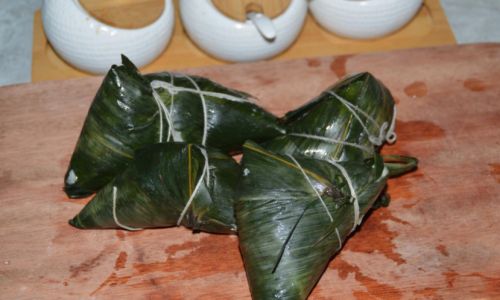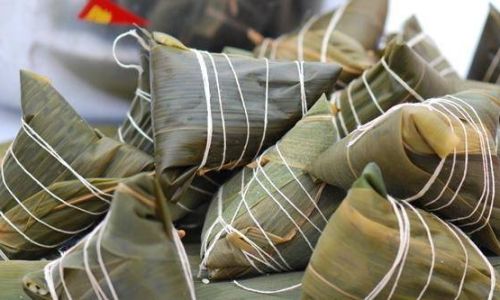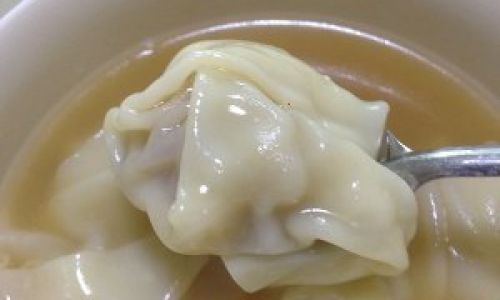Table of content
- The Freezer Compartment: Ideal for Long-Term Storage
- The Main Refrigerator Compartment: Unsuitable for Freezing
- Crisper Drawers: Designed for Produce
- Door Shelves: The Warmest Zone
- Packaging Matters
- Temperature Consistency
- Storage Duration
- Type of Zongzi
- Pre-Freezing Preparation
- Wrapping Technique
- Freezer Organization
- Avoid Overcrowding
- Thawing Methods
- Reheating Techniques
- Storing in the Wrong Compartment
- Using Improper Packaging
- Ignoring Expiration Dates
- Thawing at Room Temperature
- Extended Shelf Life
- Preserved Flavor and Texture
- Reduced Food Waste
- Convenience
- Zongzi Fried Rice
- Stuffed Vegetables
- Dessert Toppings
- Zongzi Salad
Introduction
Zongzi, a beloved traditional Chinese dish made of glutinous rice stuffed with various fillings and wrapped in bamboo leaves, holds a cherished place in culinary culture, particularly during the Dragon Boat Festival. These pyramid-shaped treats are labor-intensive to prepare, often requiring hours of soaking, stuffing, and steaming. Given their effort, preserving leftover or pre-made zongzi through freezing is a common practice. However, the question of where to store frozen zongzi in a refrigerator—and how to do it correctly—often perplexes even seasoned cooks. This article delves into the science of refrigeration, the anatomy of modern fridges, and practical tips to ensure your frozen zongzi retains its texture, taste, and safety for months.

Understanding Your Refrigerator’s Layout
Modern refrigerators are engineered with distinct zones, each optimized for specific storage needs. Misplacing items can lead to spoilage, freezer burn, or uneven cooling. To store frozen zongzi effectively, you must first grasp how your fridge’s compartments function.
The Freezer Compartment: Ideal for Long-Term Storage
The freezer is the only section of a standard refrigerator capable of maintaining temperatures below 0°F (-18°C), the threshold required to halt bacterial growth and enzymatic activity. This makes it the only viable location for long-term frozen zongzi storage. However, not all freezers are created equal:
- Manual Defrost Freezers: These maintain steadier temperatures but require periodic manual defrosting. Ideal for users who prioritize stability over convenience.
- Frost-Free Freezers: Equipped with automatic defrost cycles, these prevent ice buildup but may cause slight temperature fluctuations. Suitable for busy households.
- Drawer-Style Freezers: Often found in French-door models, these offer easy organization but may have slightly less consistent airflow.
The Main Refrigerator Compartment: Unsuitable for Freezing
The primary fridge section (typically 35–40°F or 2–4°C) is too warm for freezing. Storing zongzi here will not preserve it and may accelerate spoilage due to temperature abuse.
Crisper Drawers: Designed for Produce
These humidity-controlled drawers are optimized for fruits and vegetables. Their warmer temperatures and moisture levels make them ill-suited for frozen items.
Door Shelves: The Warmest Zone
Subject to frequent temperature fluctuations from opening/closing, the door is the worst place for frozen zongzi. Avoid this area entirely.
Factors Influencing Frozen Zongzi Storage
Even in the freezer, several variables affect how long zongzi remains palatable and safe:
Packaging Matters
- Airtight Containers: Rigid plastic or glass containers with tight-fitting lids minimize freezer burn but require sufficient headspace for expansion.
- Freezer Bags: Heavy-duty, moisture-resistant bags (e.g., vacuum-sealed or double-wrapped) are space-efficient and prevent dehydration.
- Avoid Aluminum Foil: While convenient, foil is prone to tears and offers minimal protection against oxygen.
Temperature Consistency
Frequent freezer door openings cause temperature spikes. Store zongzi toward the back of the freezer, away from vents, to shield it from fluctuations.
Storage Duration
- Optimal Window: 3–6 months. Beyond this, zongzi may develop off-flavors or texture changes.
- Label Everything: Use waterproof markers to note the freezing date. Discard any zongzi past the 6-month mark.
Type of Zongzi
- Meat-Filled Zongzi: More perishable due to protein content. Freeze within 2 hours of cooking.
- Sweet Zongzi (e.g., red bean, jujube): Slightly more forgiving but still require prompt freezing.
Step-by-Step Storage Guide
Follow this protocol to ensure your frozen zongzi emerges from the freezer as close to fresh as possible:

Pre-Freezing Preparation
- Cool Completely: Let steamed zongzi reach room temperature to prevent condensation inside packaging.
- Portion Control: Freeze individual zongzi or family-sized batches to avoid thawing more than needed.
Wrapping Technique
- Double Wrap: First, wrap each zongzi tightly in plastic film. Then, place them in freezer bags, pressing out excess air.
- Vacuum Sealing: For long-term storage, invest in a vacuum sealer to remove oxygen entirely.
Freezer Organization
- Flat Storage: Lay bags flat on a tray until frozen, then stack vertically to save space.
- Label Clearly: Include the type of zongzi and freezing date.
Avoid Overcrowding
Ensure air can circulate around packages. Overstuffing the freezer reduces efficiency and may cause uneven freezing.
Thawing and Reheating: Dos and Don’ts
Proper thawing and reheating are as critical as storage. Rushing this step can ruin texture and safety.
Thawing Methods
- Refrigerator Thawing (Safest): Transfer frozen zongzi to the fridge 12–24 hours before reheating.
- Cold Water Thawing: Submerge sealed bags in cold water, changing the water every 30 minutes.
- Microwave Defrosting: Use the “defrost” setting in short bursts, flipping zongzi periodically.
Never thaw zongzi at room temperature, as this invites bacterial growth.
Reheating Techniques
- Steaming: The traditional method. Steam for 15–20 minutes until heated through.
- Boiling: Simmer in water for 10–12 minutes.
- Oven Reheating: Wrap in foil and bake at 350°F (175°C) for 20–25 minutes.
Avoid microwaving without a damp paper towel to prevent drying out.
Common Mistakes to Avoid
Even experienced cooks make errors that compromise frozen zongzi quality:
Storing in the Wrong Compartment
As discussed, the freezer is non-negotiable. The main fridge or door shelves will spoil zongzi.
Using Improper Packaging
Flimsy containers or partially sealed bags lead to freezer burn, which turns zongzi dry and tasteless.
Ignoring Expiration Dates
Labeling is crucial. Consuming zongzi past 6 months risks flavor degradation and potential safety issues.

Thawing at Room Temperature
This practice is a food safety hazard. Bacteria multiply rapidly between 40°F (4°C) and 140°F (60°C).
Benefits of Proper Frozen Zongzi Storage
Mastering this process yields numerous advantages:
Extended Shelf Life
Freezing halts spoilage, allowing you to enjoy zongzi months after preparation.
Preserved Flavor and Texture
Correct storage minimizes ice crystal formation, which can make rice grainy.
Reduced Food Waste
By preventing spoilage, you save money and reduce environmental impact.
Convenience
Pre-portioned frozen zongzi make for quick, satisfying meals or snacks.
Creative Uses for Leftover Frozen Zongzi
Even with careful storage, you might end up with extras. Repurpose them creatively:
Zongzi Fried Rice
Chop thawed zongzi into cubes and stir-fry with vegetables, eggs, and soy sauce.

Stuffed Vegetables
Use zongzi filling as a stuffing for bell peppers or tomatoes.
Dessert Toppings
Sweet zongzi can be crumbled over ice cream or yogurt.
Zongzi Salad
Toss diced zongzi with greens, nuts, and a vinaigrette for a unique salad.
Environmental Considerations
Freezing zongzi responsibly also aligns with eco-friendly practices:
- Reduce Food Waste: Proper storage minimizes discard.
- Reusable Containers: Opt for silicone bags or glass containers over single-use plastics.
- Energy Efficiency: Keep your freezer full (but not overstuffed) to maintain efficiency.
Conclusion
Storing frozen zongzi correctly is a blend of science and tradition. By understanding your refrigerator’s architecture, using quality packaging, and adhering to proper thawing protocols, you can savor this culinary treasure for months. Whether you’re preserving a family recipe or stocking up for festive occasions, these guidelines ensure every bite of zongzi remains as delightful as the day it was made. Embrace the art of freezing, and let your refrigerator become a gateway to preserving culture, one perfectly preserved zongzi at a time.






0 comments